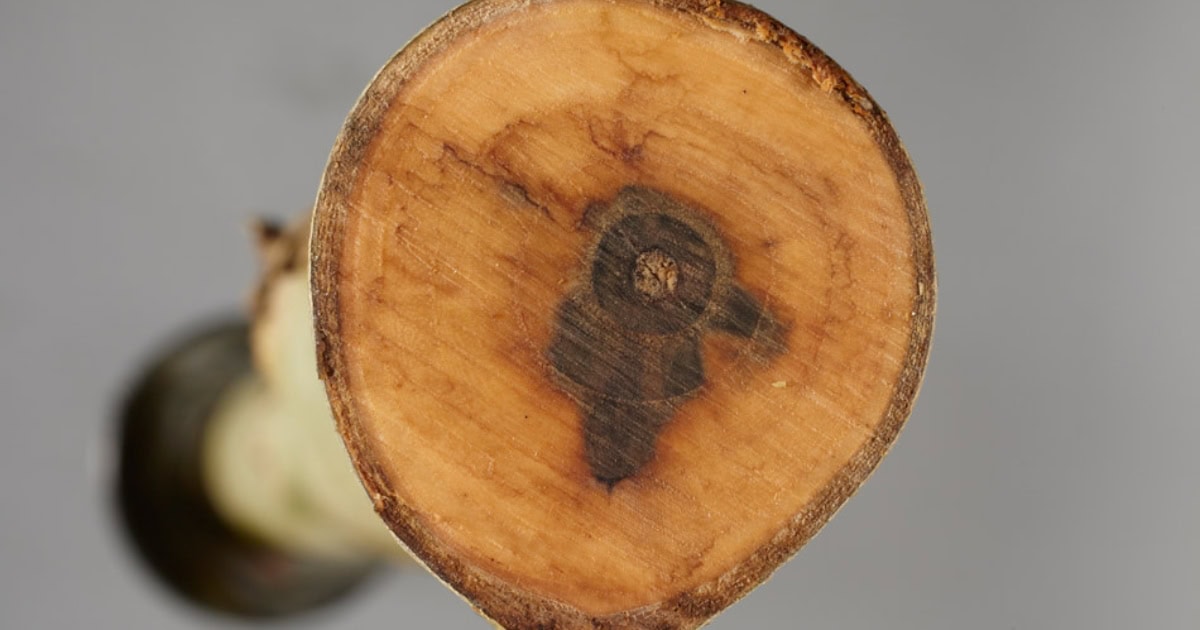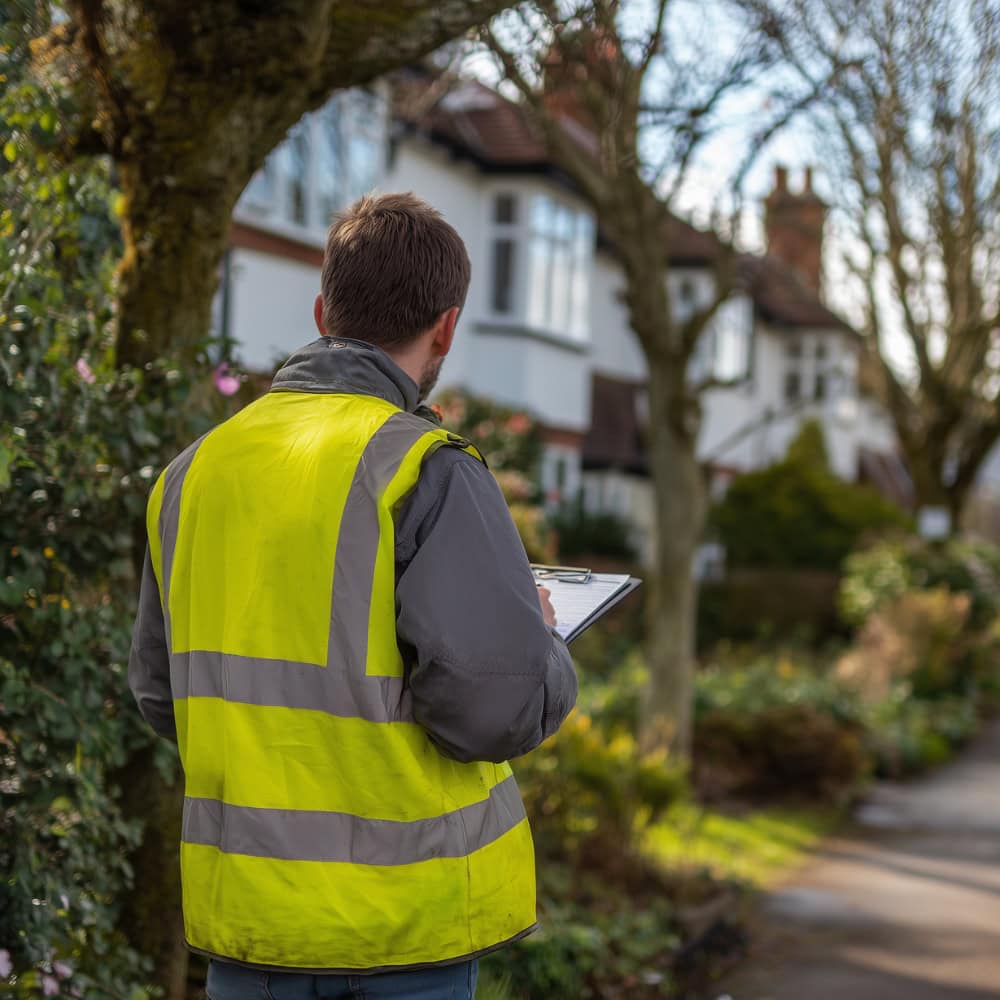Ash Dieback: What Tree Owners Need to Know (UK Guide)

Introduction: what is ash dieback?
If your ash has started to look a bit “see-through”, you’re not alone. Ash dieback is a serious disease caused by the fungus Hymenoscyphus fraxineus (formerly Chalara fraxinea). It mainly affects common ash (Fraxinus excelsior)—the UK’s native ash— (Forest Research overview · Google Scholar) and it can lead to leaf loss, crown dieback and, in many cases, the death of the tree. For homeowners and landowners, the impacts are practical too: safety, property risk, legal duties and replanting.
In this guide we explain ash dieback symptoms in plain English, show what ash dieback looks like, and outline sensible next steps—when to monitor, when to get a professional opinion, and how to manage the risks.
Ash dieback disease: how it spreads and why ash is vulnerable
Ash dieback spreads via microscopic ascospores released from fruiting bodies on fallen ash leaf stalks (rachises) (Woodland Trust lifecycle explainer · Google Scholar). In summer and early autumn, windborne spores infect leaves, then move into shoots and the tree’s vascular system (Google Scholar · Google Scholar). Repeated infections weaken the tree. Young trees decline quickly; mature trees may fade over several seasons and become structurally compromised as deadwood builds and living wood turns brittle (Tree Council guide for owners).
Some ash shows partial tolerance, but there’s no curative treatment once infection is established (Forest Research technical material · Google Scholar). Good management focuses on risk reduction, supporting tree health where possible, and—where appropriate—retaining trees that are coping reasonably well.
Ash dieback symptoms (season-by-season guide)
Recognising ash dieback symptoms is easier if you know what to look for through the year (Forest Research symptoms · RHS symptoms · Google Scholar).
Spring
- Late or patchy leaf-out compared with nearby ash.
- Small, misshapen leaflets on infected shoots.
- Blackened or failed shoot tips that never get going (Google Scholar).
Summer
- A thin, “see-through” crown with fewer leaves than a healthy ash.
- Discoloured or wilting leaves on individual shoots; some may blacken and hang on (RHS).
- Diamond-shaped lesions where a shoot meets a larger twig or stem; these can girdle the shoot (Woodland Trust · Google Scholar).
Autumn
- Early leaf-fall in affected parts of the crown.
- Epicormic shoots (tufts of new growth) on the trunk or larger limbs as the tree tries to compensate (Woodland Trust).
Winter
- Dead twigs and fine branch tips obvious against the sky.
- Sunken canker lesions and cracks at old infection points.
- Dark, discoloured bark and shallow, sunken patches at twig/branch bases (RHS · Google Scholar).
What does ash dieback look like?
Wondering what ash dieback looks like in practice? Think of a crown that’s noticeably thinner than other ash nearby, with dead tips and patchy foliage. Up close you may see:
- Blackened, dead shoots at branch ends.
- Diamond-shaped lesions at twig junctions (Woodland Trust · Google Scholar).
- Peeling or cracked bark around lesions; cut surfaces may show brown staining beneath (RHS).
- Epicormic shoots emerging lower on the trunk or from main limbs (Woodland Trust).
- On young trees, rapid top-down dieback, sometimes leaving a small tuft of live foliage lower down (Forest Research overview · Google Scholar).
One clue isn’t proof—we look for the pattern: crown condition, where symptoms occur, the shape of lesions, shoot dieback and the site context.
Ash dieback pictures: what to capture for a diagnosis
Most ash dieback pictures show one or more of the following:
- A thin, open crown compared with surrounding trees.
- Dead or blackened shoot tips and twigs.
- Diamond-shaped lesions at nodes (Woodland Trust).
- Epicormic growth on the trunk, often below declining sections (Woodland Trust).
If you’re sending photos for advice, make them count:
- A whole-tree shot from 10–30 metres away with the crown against the sky.
- Mid-crown close-ups of shoot tips and leaflets (summer).
- A clear close-up of a lesion at a branch union.
- Base and stem shots showing any cracks, exudates or fungal fruiting bodies (useful for structural assessment).
Distinguishing ash dieback from other problems
Several issues can mimic—or add to—ash dieback disease:
- Drought stress or waterlogging: general wilt or early leaf-drop across multiple species on site; classic diamond lesions are less typical.
- Ash bud moth or leaf miners: cosmetic leaf damage without widespread tip dieback or the characteristic lesions. (Background on Prays fraxinella: Google Scholar · Google Scholar).
- Honey fungus (Armillaria): attacks the collar and roots; look for white mycelial fans under bark or honey-coloured toadstools in autumn (RHS guide · Google Scholar).
- Mechanical damage (mower or strimmer): bark wounds at the base can resemble cankers but tend to be localised and clearly linked to ground-level damage.
- Salts and pollution (roadsides): edge dieback on the road-facing side without the typical lesion pattern.
A qualified arboriculturist considers the whole picture and, if needed, may recommend decay detection (e.g., resistograph or sonic testing) to check structural integrity.
Risks to people and property
As dieback progresses, ash wood becomes brittle. That raises the chance of sudden limb failure, especially in wind. Priority contexts include:
- Public highways and footpaths beneath or beside the canopy.
- Gardens, play areas, parking bays, outbuildings and fences within strike distance.
- Woodland paths and areas where machinery operates.
Here in the North West—Merseyside, Greater Manchester, Lancashire and Cheshire—we often see quicker decline along windy roadside belts and exposed gardens. Where targets are present, regular inspections and timely work are essential (GOV.UK: Managing ash dieback and legal responsibilities). In belts or small woodlands, a coordinated plan may combine selective felling with retention of better-performing individuals for biodiversity and potential tolerance (Tree Council guidance).
What tree owners should do next
A proportionate, evidence-based approach usually looks like this:
Monitor
Take a whole-crown photo now and repeat from the same spot next season. Comparing like-for-like images makes change obvious.
Arrange a professional survey
An arboricultural inspection can confirm likely diagnosis, assess residual strength, identify targets and set priorities. For homeowners this is typically a Tree Condition Survey. Useful background: Managing ash dieback in England · research context: Google Scholar.
Choose the lightest effective intervention
- Retain with monitoring where symptoms are mild and risk is acceptable; agree a re-inspection schedule.
- Selective pruning to remove deadwood and reduce end-weight on compromised limbs; improve clearance over paths and roads (see evidence that pruning can help maintain vitality in younger urban trees: Google Scholar).
- Fell and replace where risk can’t be managed or decline is advanced—especially over high-use areas or where decay is evident (Tree Council guide).
Plan access and timing
Schedule around nesting birds (March–August) and check for bat roosts. All wild birds, their eggs and nests are protected by law (GOV.UK). Bats roost in trees and have strong legal protection (Bat Conservation Trust, Natural England standing advice for bats).
Replant
If removal’s the right call, replant to maintain canopy cover and amenity. Choose diverse species that suit your soil, space and exposure. See the Urban Tree Manual – Right Tree, Right Place (overview · PDF) and Tree species selection for green infrastructure (TDAG) (PDF). For site-led species choice, foresters often use Forest Research’s Ecological Site Classification (ESC).
Permissions and timing in the UK
Before any work, check:
- Tree Preservation Orders (TPOs) / Conservation Areas: permission is often required from the Local Planning Authority (GOV.UK TPO guidance · Planning Portal overview). Dead/dangerous exemptions exist but evidence matters—keep photos and obtain a written report where possible.
- Felling licences (mainly rural/woodland): thresholds apply to volumes and areas. Domestic gardens are often exempt, but it’s worth checking (Forestry Commission: when you need a licence · Latest “Getting permission” page).
- Highways / third-party land: you may need traffic management or neighbour notifications near roads and boundaries.
If in doubt, ask. The cost of a survey is small compared with the risk of non-compliant or poorly specified work.
Replanting and future resilience
Replacing lost ash is a chance to build resilience with the right mix of species.
- Right tree, right place: match ultimate size to space, and consider soil, drainage, exposure and nearby structures (Urban Tree Manual above).
- Mix it up: in urban gardens, good options include field maple, small-leaved lime, hornbeam, rowan, birch, crab apple and suitable disease-resistant elm cultivars (TDAG species guide above).
- Aftercare counts: stake and tie correctly, mulch to suppress weeds and conserve moisture, water in dry spells for the first 2–3 growing seasons, and include formative pruning.
How we can help
We provide independent, professional advice across the North West. Typical support includes:
- Tree Condition Surveys with clear, prioritised recommendations.
- Risk assessments for ash near paths, roads and public areas.
- Planning and consents help for TPO/Conservation Area notifications.
- Work specifications and contractor briefings so the right work is done safely and legally.
- Ongoing monitoring to track change and avoid unnecessary removals.
If you’re concerned about an ash on your property, email two photos and your postcode—e.g., L17, PR4, WA1—and we’ll advise the best next step and, if needed, arrange a visit.
FAQs
Can an ash recover from ash dieback?
Some trees show partial tolerance and can stabilise with a thinner but functional crown (Google Scholar). Many continue to decline. A survey will help decide whether retention with monitoring is sensible for your tree and setting.
Is it safe to keep a lightly affected ash?
Possibly. If structure is sound and targets are low, periodic monitoring and selective pruning can manage risk (Tree Council guide).
When should I remove an ash with ash dieback?
When the risk is unacceptable and can’t be reduced by pruning, when decline is advanced, or when significant decay is present—especially where people or property are within strike range (GOV.UK).
What does ash dieback look like in winter?
Dead twig tips, sunken diamond-edge lesions at shoot junctions, and a thinner fine-branch structure than healthy ash nearby (RHS · Google Scholar).
Do I need permission to fell an ash with ash dieback?
You may—particularly with TPOs or inside Conservation Areas (GOV.UK TPO guidance). Dead/dangerous exemptions exist, but evidence is key. Keep photos and seek a written report before works.
Will pruning stop ash dieback?
Pruning doesn’t cure the disease, but it can reduce risk (deadwood removal, end-weight reduction) and—in young, high-value amenity trees—there’s evidence it may help maintain vitality when done well (Google Scholar). It should be specified by an arboriculturist and carried out by competent professionals.
Quick self-check for tree owners
- Is your ash’s crown thinner than others nearby?
- Do you see blackened shoot tips or diamond-shaped lesions at twig junctions?
- Is there new growth sprouting lower on the trunk?
- Are there targets beneath likely fall zones (paths, parking, roads, seating)?
If you’ve ticked several of the above—especially over areas people use—book a Tree Condition Survey. Keep any ash dieback pictures you’ve taken; they’re useful for diagnosis and, if needed, permissions.
Extra reading (Google Scholar)
- Combes M, Webber J, Boddy L. Current understanding and future prospects for ash dieback disease (with a focus on Britain). Forestry (2024). Google Scholar.
- Landolt J et al. Ash dieback due to Hymenoscyphus fraxineus. Plant Pathology (2016). Google Scholar.
- Grosdidier M et al. Dispersal of H. fraxineus airborne inoculum. FEMS Microbiology Ecology (2018). Google Scholar.
- Wylder B et al. Apothecia mainly on fallen rachises; UK timing. Forestry (2018). Google Scholar.
- Böhm JW et al. Pathogen load and symptom overview. European Journal of Plant Pathology (2024). Google Scholar.
- Nielsen LR et al. Host–pathogen interactions and tolerance. Forests/Frontiers (various). Google Scholar.
- Marčiulynienė D et al. Can pruning help maintain vitality of ash trees affected by ash dieback? Urban Forestry & Urban Greening (2017). Google Scholar.
- Pastirčáková K et al. Non-ash oleaceous hosts (Phillyrea, Chionanthus). Forests (2020). Google Scholar.
- Baumgartner K et al. Armillaria: diagnostic mycelial fans (honey fungus). Molecular Plant Pathology (2011). Google Scholar.
Spiegel P et al. Synergistic negative effects of ash dieback and Armillaria. Forest Ecology and Management (2025). Google Scholar.
Book in your tree survey today
Get clear, professional advice from qualified tree surveyors you can trust. Whether you need a report for planning, insurance, mortgages or safety, we’ll deliver accurate results fast.


